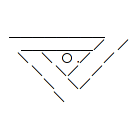Nepomuk
NEPOMUK (Networked Environment for Personal, Ontology-based Management of Unified Knowledge) is an open-source software specification that is concerned with the development of a social semantic desktop that enriches and interconnects data from different desktop applications using semantic metadata stored as RDF. Initially, it was developed in the NEPOMUK project and cost 17 million euros, of which 11.5 million was funded by the European Union. - Wikipedia
Contents
Intro
Nepomuk is a semantic desktop[1]: A futuristic system that many have dreamed of. Basically, it brings the power of Danbooru to the PC, allowing your computer to make and handle metadata between applications so that it can process it better and even find relations between files. These technologies are not new, though; they've been used in relational databases to power the Web 2.0 technologies for a while. A better explanation is here.[2]
It's hard to understand, but the implications are powerful. You could handle your gigantic, unsearchable archive of pictures from /b/ just like if they were on Danbooru; using tags, comments, and ratings. Or Nepomuk could crawl the web and tag them for you. The computer would relate recieved documents and files to a person in your contacts list as soon as it was sent to you, and they would include more tags, comments, and ratings from others. In email, the second that you recieve an email with an appointment, it is placed on your calendar. Metadata in MP3s or videos can include lyrics or subtitles, which can then be searched with the Strigi search system.
You could use Strigi to search within files, and also the tags, comments, and ratings placed on them; useful for huge stores of leaks which you want to data mine for some spicy stuff. The computer could discover relations between files (as they have the same tag, or linked contact), allowing them to process it better.
The possibilities are endless, and Nepomuk may have unexplored importance in the future.
Yes, it's kind of a big deal. So, KDE has integrated many of it's applications into Nepomuk, from the KMail email client to the Bangarang media player. This is the future desktop, right in your hands.
